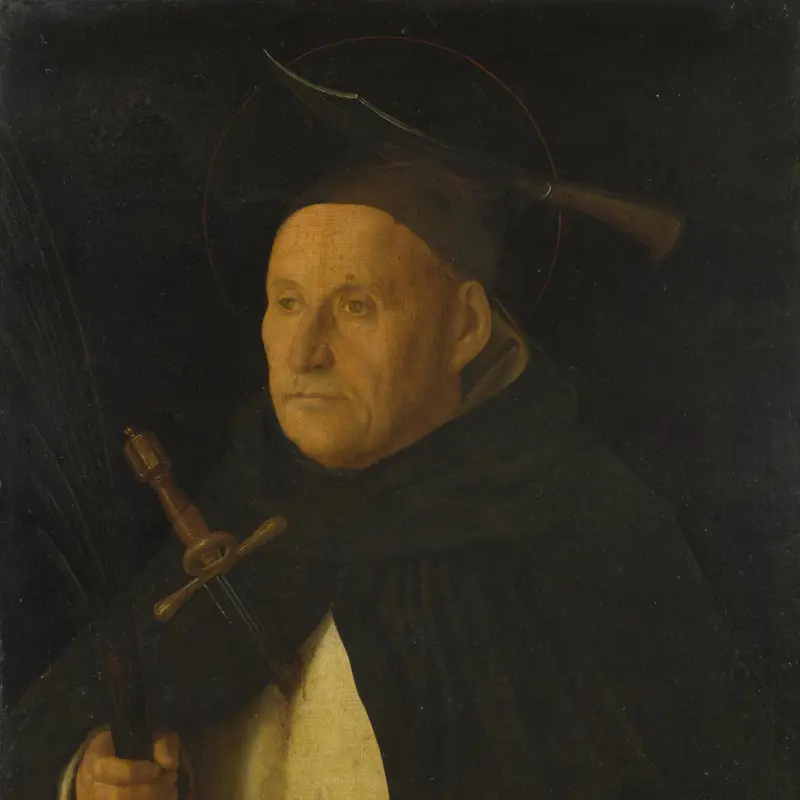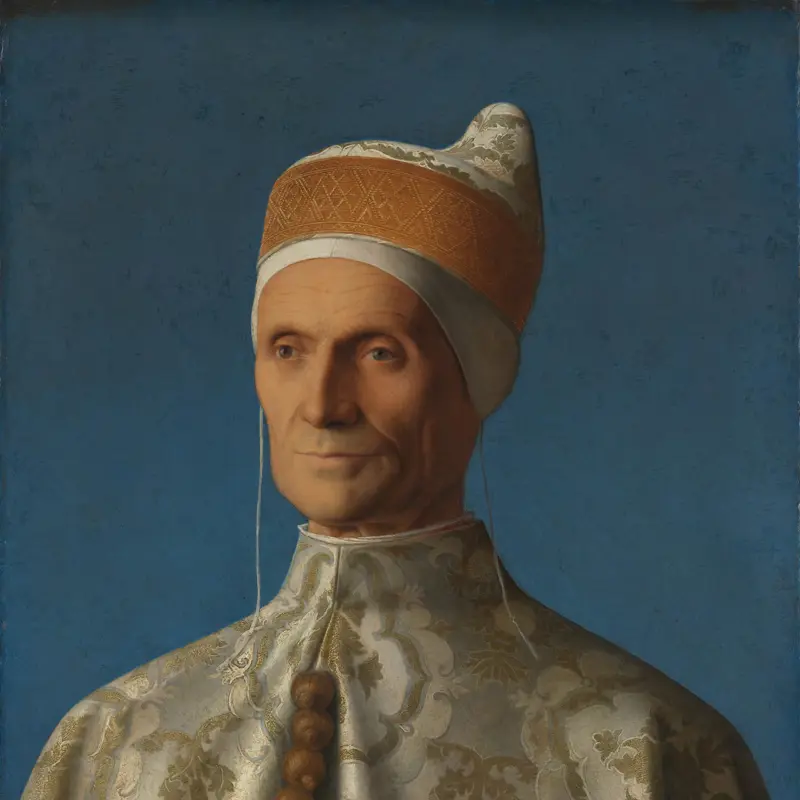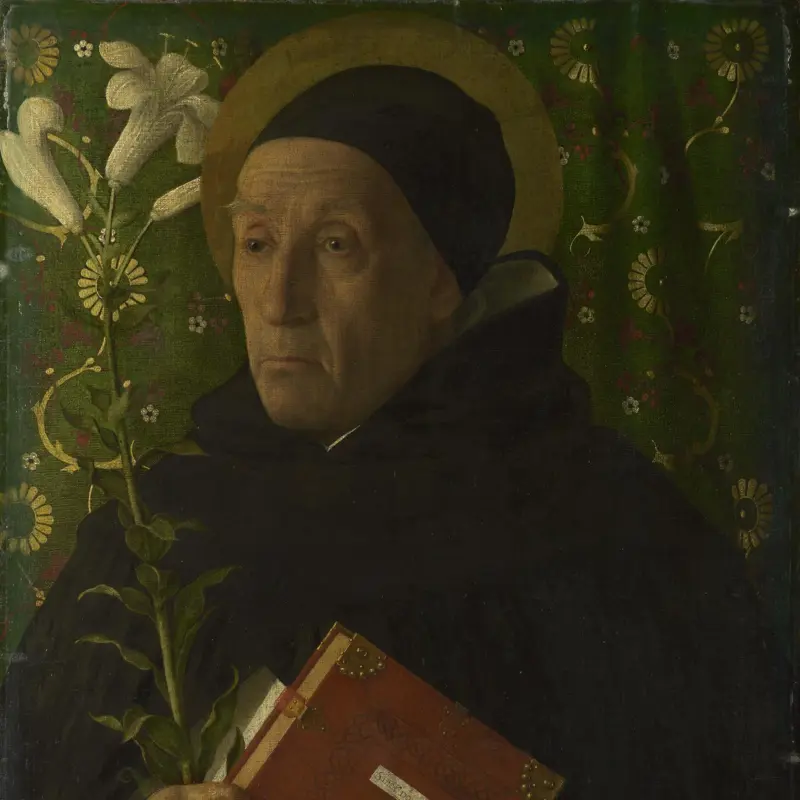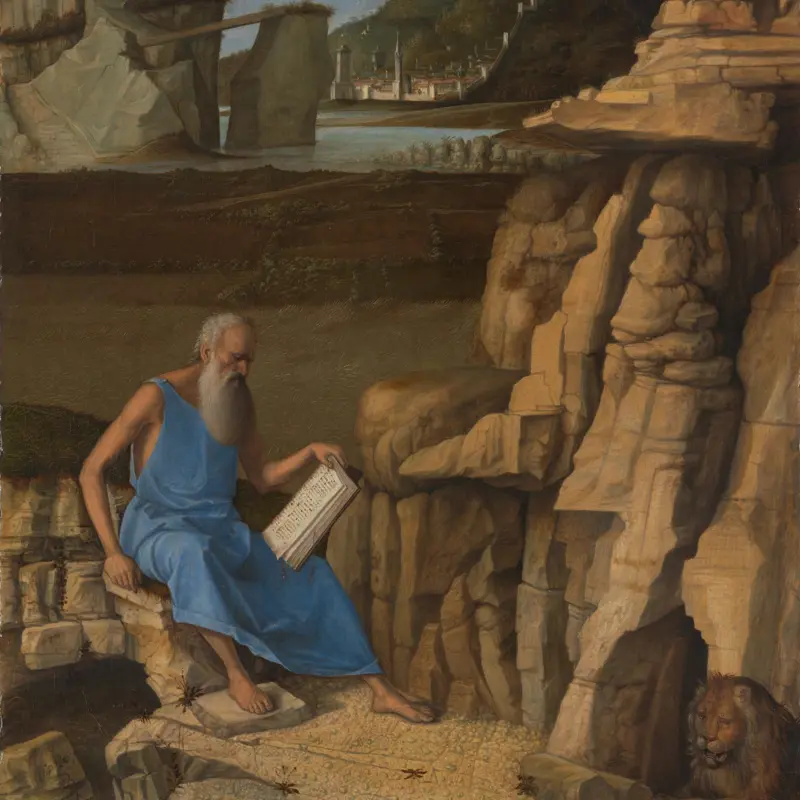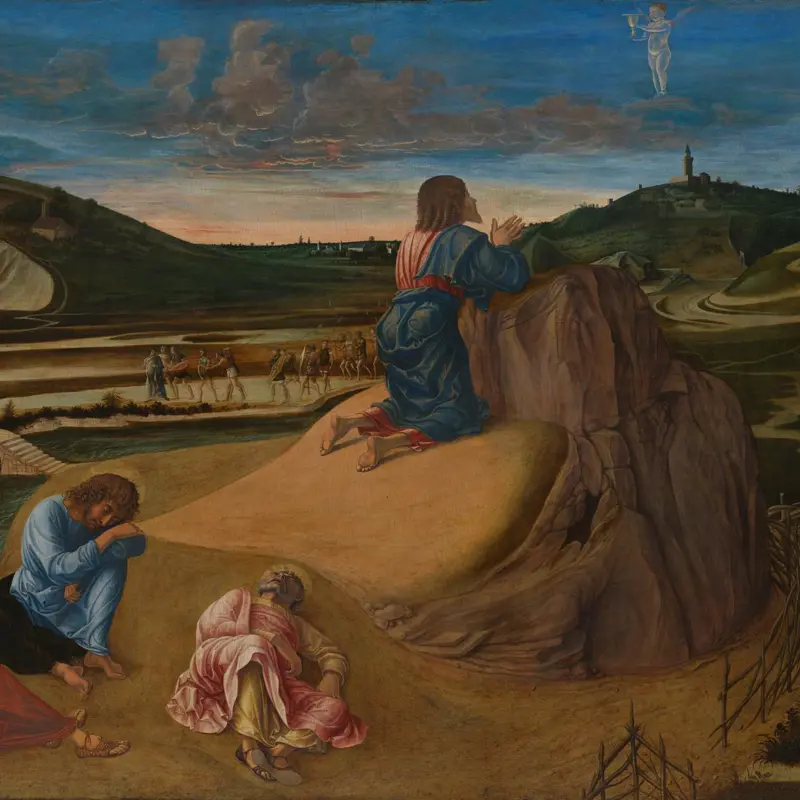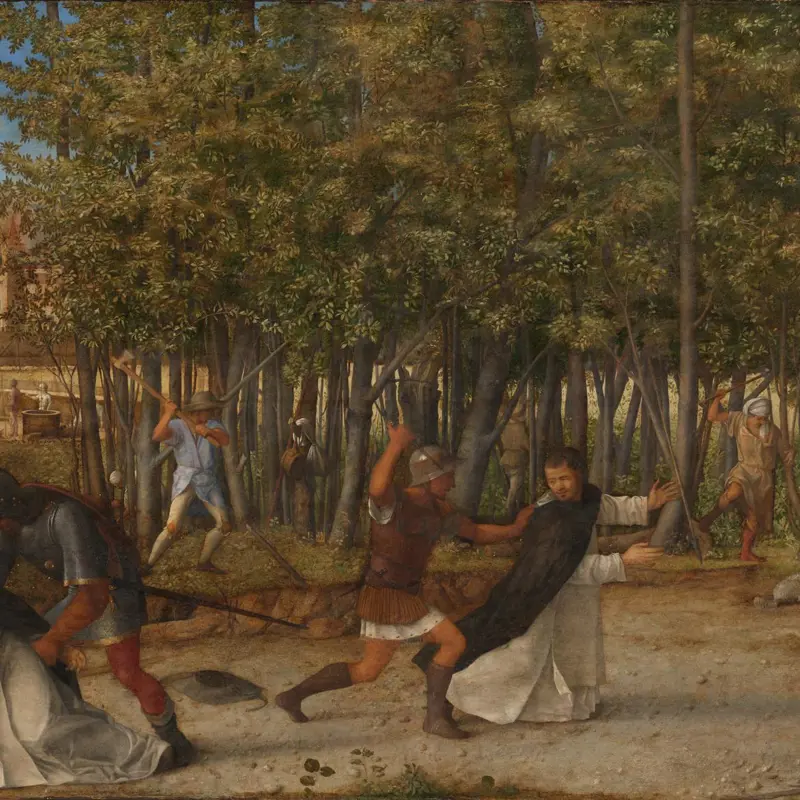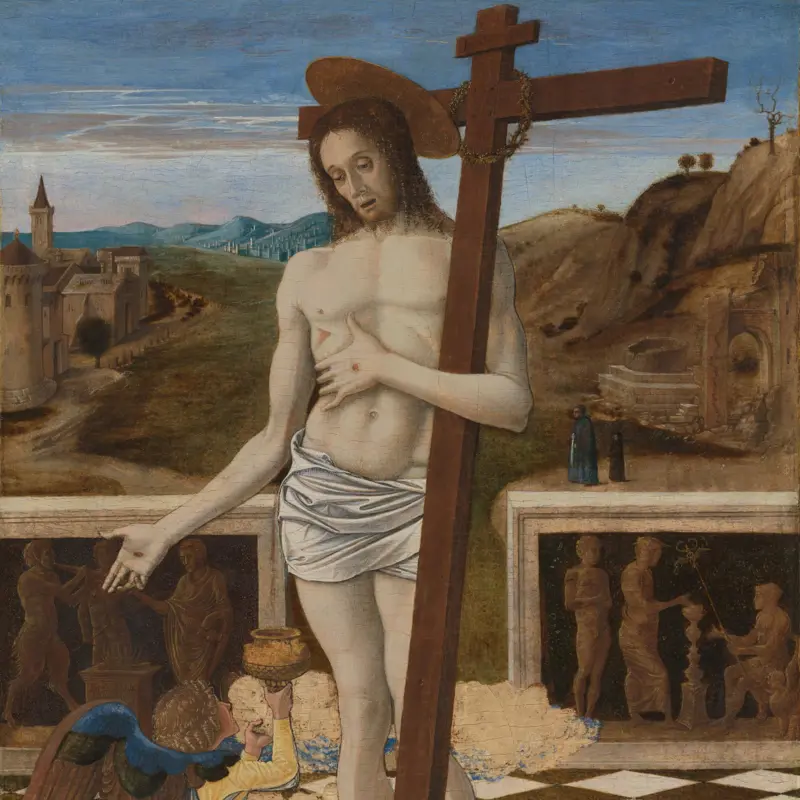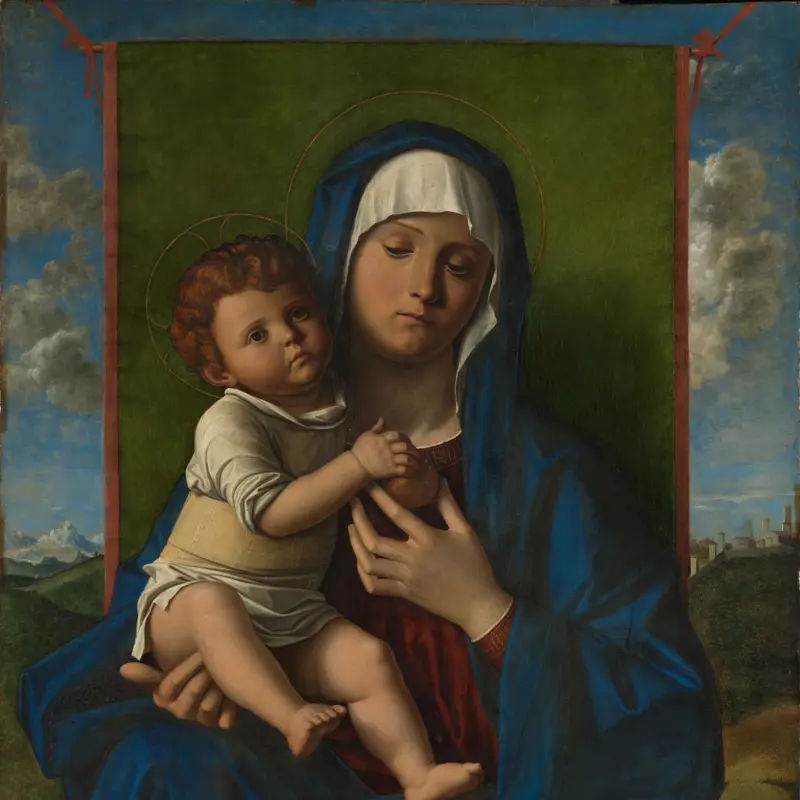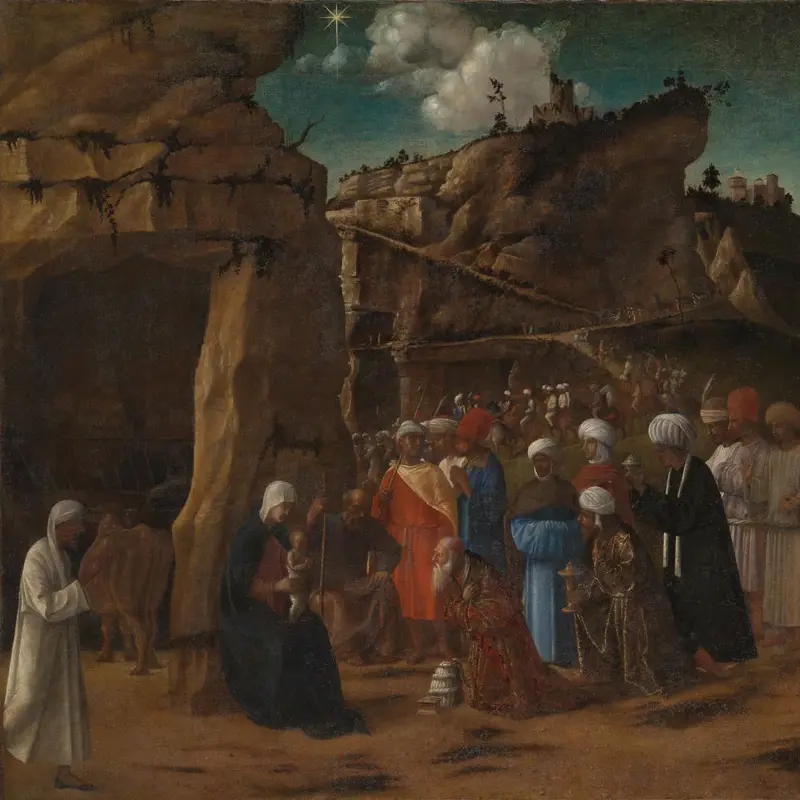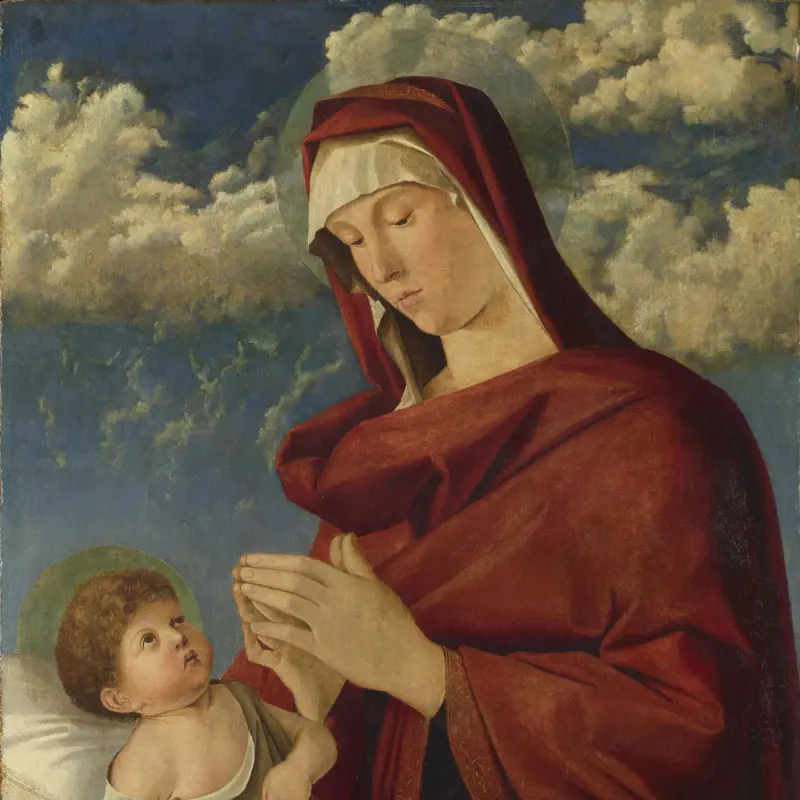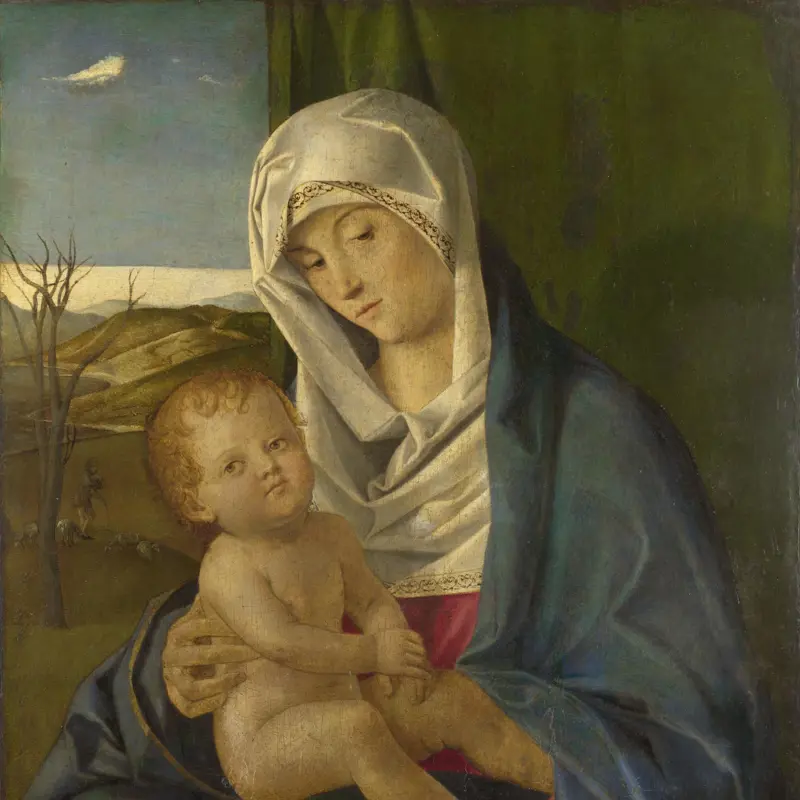Workshop of Giovanni Bellini, 'The Circumcision', about 1500
About the work
Overview
According to the Gospel of Luke, Christ was circumcised, like all Jewish baby boys, when he was eight days old (Luke 2: 21). He is shown naked, sitting on a cushion upon a table or altar, clenching his little fists as a priest performs the ritual. His mother, the Virgin Mary, gently props him up; the old man behind is his father, Joseph.
Christ’s nakedness emphasises his vulnerability, and his position on the altar is probably intended to bring to mind a sacrifice – like that of a lamb, part of Jewish religious tradition in this period. In the Gospels, John the Baptist refers to Christ as the ‘lamb of God’, anticipating his sacrifice at the Crucifixion.
Bellini may have contributed to the women’s faces but the texture of the fabrics is not as convincing as in his portrait of Doge Leonardo Loredan, for example, suggesting much of the work was done by his assistants.
Key facts
Details
- Full title
- The Circumcision
- Artist
- Workshop of Giovanni Bellini
- Artist dates
- About 1435 - 1516
- Date made
- About 1500
- Medium and support
- Oil on wood
- Dimensions
- 74.9 × 102.2 cm
- Inscription summary
- Signed
- Acquisition credit
- Presented by the Earl of Carlisle, 1895
- Inventory number
- NG1455
- Location
- Room 63
- Collection
- Main Collection
- Previous owners
- Frame
- 16th-century Italian Frame
Provenance
Additional information
Text extracted from the ‘Provenance’ section of the catalogue entry in Martin Davies, ‘National Gallery Catalogues: The Earlier Italian Schools’, London 1986; for further information, see the full catalogue entry.
Bibliography
-
1718B. Dal Pozzo, Le vite de' pittori, degli scultori, et architetti veronesi raccolte da varj autori, … Con la narrativa delle Pitture, e Sculture, che s'attrovano nelle Chiese, case, & altri luoghi publici, e privati di Verona, e suo Territorio, Verona 1718
-
1727L.D. de Saint-Gelais, Description des tableaux du Palais Royal: Avec la vie des peintres à la tête de leurs ouvrages: Dédiée à Monseigneur le duc d'Orleans, premier prince du sang, Paris 1727
-
1854G.F. Waagen, Treasures of Art in Great Britain: Being and Account of the Chief Collections of Paintings, Drawings, Sculptures, Illuminated Mss. […], vol. 2, trans. E. Eastlake, London 1854
-
1870G. Campori, Raccolta di cataloghi ed inventarii inediti di quadri, statue, disegni, bronzi, dorerie, smalti, medaglie, avorii, ecc, Modena 1870
-
1871J.A. Crowe and G.B. Cavalcaselle, A History of Painting in North Italy: Venice, Padua, Vicenza, Verona, Ferrara, Milan, Friuli, Brescia, from the Fourteenth to the Sixteenth Century, 2 vols, London 1871
-
1909B. Berenson, The Venetian Painters of the Renaissance, 3rd edn, New York 1909
-
1914C. Ridolfi, Le maraviglie dell'arte, 1648, ed. D. von Hadeln, Berlin 1914
-
1923B. Berenson, 'Un possibile Antonello da Messina ed uno impossibile, II', Dedalo, IV, 1923
-
1928G. Gronau, Spätwerke des Giovanni Bellini, Strasbourg 1928
-
1928G. Gronau, 'Le opere tarde di Giovanni Bellini', Pinacotheca, 1928, pp. 57-70, 115-31, 171-7
-
1930G. Gronau, Giovanni Bellini, Stuttgart 1930
-
1932B. Berenson, Italian Pictures of the Renaissance: A List of the Principal Artists and Their Works, with an Index of Places, Oxford 1932
-
1935P. Hendy, 'The Presentation by Giovanni Bellini', The Burlington Magazine, LXVI/384, 1935, pp. 122-7
-
1951Davies, Martin, National Gallery Catalogues: The Earlier Italian Schools, London 1951
-
1954G. Robertson, Vincenzo Catena, Edinburgh 1954
-
1959R. Pallucchini, Giovanni Bellini, Milan 1959
-
1962F. Heinemann, Giovanni Bellini e i Belliniani, 3 vols, Venice 1962
-
1965F. Gibbons, 'Practices in Giovanni Bellini's Workshop', Pantheon, 1965, pp. 146-55
-
1968G. Robertson, Giovanni Bellini, Oxford 1968
-
1972N. Huse, Studien zu Giovanni Bellini, Berlin 1972
-
1977I. Lavin (ed.), Studies in Late Medieval and Renaissance Painting in Honor of Millard Meiss, New York 1977
-
1986Davies, Martin, National Gallery Catalogues: The Earlier Italian Schools, revised edn, London 1986
-
1988F. Folliot, A. Forray-Carlier and F. Mardrus, Le Palais Royal (exh. cat. Musée Carnavalet, 9 May - 4 September 1988), Paris 1988
-
1989R. Goffen, Giovanni Bellini, New Haven 1989
-
1992A. Tempestini, Giovanni Bellini. Catalogo completo dei dipinti, Florence 1992
-
2000G. Finaldi, The Image of Christ, London 2000
-
2000O. Garnett, 'The Letters and Collection of William Graham: Pre-Raphaelite Patron and Pre-Raphael Collector', The Walpole Society, LXII, 2000, pp. 145-343
-
2001
C. Baker and T. Henry, The National Gallery: Complete Illustrated Catalogue, London 2001
-
2004G. Toscano, 'Giovanni Bellini et la France (XVIe-XXe siècles): Les aléas d'une reconnaissance', in G. Toscano and F. Valcanover (eds), Da Bellini a Veronese: Temi di arte Veneta, Venice 2004, pp. 197-249
-
2005C. Campbell and A. Chong, Bellini and the East (exh. cat. Isabella Stewart Gardner Museum, 14 December 2005 - 26 March 2006; The National Gallery, London, 12 April - 25 June 2006), Boston 2005
-
2006L. Fuccia, 'Pour "la satisfaction tant attendue " et "les desirs passionnes" du marquis de Seignelay. Une correspondance inedite sur le voyage d'Alvarez en Italie', Revue de l'art, 152, 2006, pp. 37-52
-
2008O. Bätschmann, Giovanni Bellini, London 2008
About this record
If you know more about this work or have spotted an error, please contact us. Please note that exhibition histories are listed from 2009 onwards. Bibliographies may not be complete; more comprehensive information is available in the National Gallery Library.

